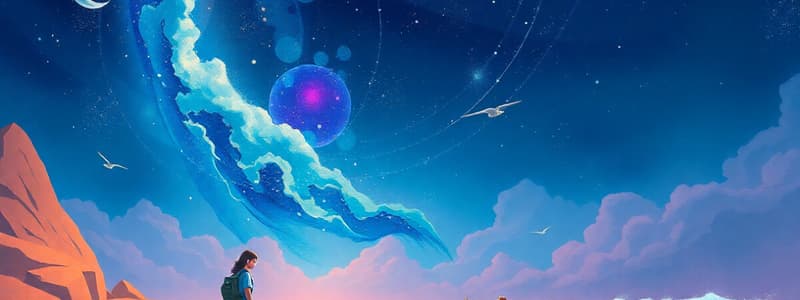Podcast
Questions and Answers
Which period focused on the rebirth of freedom?
Which period focused on the rebirth of freedom?
- Rebirth of Freedom (correct)
- American Period
- Japanese Period
- Spanish period
The 'Period of Third Philippine Republic' occurred before the 'Post EDSA' period.
The 'Period of Third Philippine Republic' occurred before the 'Post EDSA' period.
False (B)
What period immediately followed the American Period?
What period immediately followed the American Period?
Japanese Period
The ______ is a period characterized by social and political activism, aiming to build a new society.
The ______ is a period characterized by social and political activism, aiming to build a new society.
Match the periods with their corresponding labels:
Match the periods with their corresponding labels:
Flashcards
Spanish Period
Spanish Period
A historical period in the Philippines characterized by Spanish colonization.
Period of Enlightenment
Period of Enlightenment
An era emphasizing reason, science, and individualism during the 17th and 18th centuries.
American Period
American Period
A time of U.S. governance in the Philippines, marked by significant changes and modernization.
Post EDSA
Post EDSA
Signup and view all the flashcards
Period of Activism
Period of Activism
Signup and view all the flashcards
Study Notes
21st Century Literature Course
- Focuses on Philippine and world literature
- First semester course
- Aims to foster appreciation and critical analysis of 21st-century literature
- Explores diverse dimensions, genres, elements, structures, contexts, and traditions
- Covers literature of the region where the school is located in relation to literature from other regions of the country
Defining Literature
- Literature is a body of written (or oral) works that display aesthetic quality
- Latin roots: littera (letter), litteratura (literature), letter (English)
- Literature encompasses a wide knowledge of books from late Middle English
Literature's Purpose
- Provides the story of humanity, helping understand human nature
- Offers entertainment and pleasure
- Encourages appreciation of literary heritage
Types of Literature
-
Prose: Uses natural language, mimicking everyday speech to convey stories, ideas, and emotions without poetic structure
- Examples: Novel, Short Story, Legend, Fables, Essay, Biography, Autobiography
-
Poetry: Employs rhythmic and metrical patterns like rhyme, meter, and syllabic structures, creating a distinctive musical quality that separates it from prose
- Examples: Epic, Ballad, Sonnet, Elegy, Ode, Psalm, Narrative Poetry, Lyric Poetry, Dramatic Poetry
- Relies heavily on figurative language (metaphors, similes, personification, symbolism)
Literary Timeline
-
Provides a historical overview of Philippine literary periods
- Includes periods like: Pre-Spanish, Spanish, American, Japanese, Rebirth of Freedom, 21st Century, Post-EDSA, and the period of the Third Philippine Republic, and Period of Activism and New Society.
-
Provides dates for each period.
Dimensions of Philippine Literary History
- Geography: Examines the relationship between the people and their environment (including location of the text)
- Language: Explores the various languages (e.g., Bikolano, Bisaya, Cebuano, Ilocano, Tagalog, Tausug, Waray)
- Ethnicity: Analyzes cultural background and descent of diverse groups (e.g., Tagalog, Bisaya/Binisaya, Ilocano, Cebuano, Ilo-ngo, Bikol/Bicol, Waray, Kapampangan, Maguindanao, Pangasinan)
Pre-colonial Period
- The longest period in Philippine literary history
- Includes chants, proverbs, songs, and folk narratives, passed down through generations orally
- Reflects the early culture and daily life of the Filipino people
- Pre-colonial literature focuses on the people's livelihood, customs, and traditions
- Examples include Bugtong (riddles) and Salawikain (proverbs)
Other forms of Literature
- Legends: Folklore stories of human events, perceived as real by the teller and listener
- Folktales: Stories about life, love, adventure, humor, and horror; can contain lessons within the narrative
- Epics: Long narrative poems about heroic achievements and events
- Folk Songs: Oldest forms of Philippine literature, reflecting early culture
- Chants or Bulong: Used in witchcraft or enchantment, common in remote Visayan areas
Studying That Suits You
Use AI to generate personalized quizzes and flashcards to suit your learning preferences.



